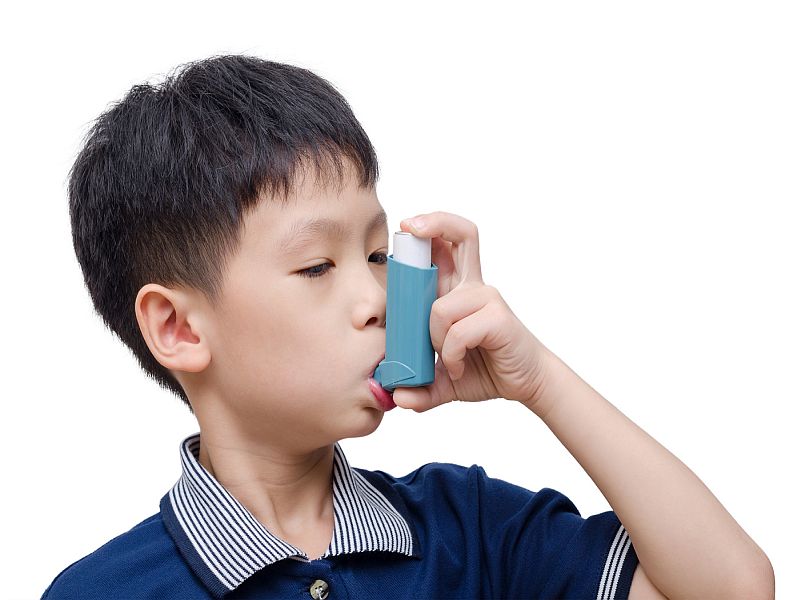
Thursday, May 12, 2016

THURSDAY, May 12, 2016 (HealthDay News) -- Though many children with persistent asthma get better as they get older, some may go on to develop chronic obstructive pulmonary disease (COPD) in early adulthood, a new study suggests.
People with the poorest lung function and reduced lung growth are most at risk for developing COPD, a chronic progressive condition that makes it hard to breathe, the researchers said.
"Study participants were children with mild-to-moderate persistent asthma, which places them among the most severe 30 or 40 percent of all childhood asthmatics. Among this group, serious airway obstruction is an early life possibility," said researcher Michael McGeachie.
"There may be interventions that can help mitigate these risks, although we do not specifically identify any," said McGeachie, an instructor in medicine at Harvard Medical School and Brigham and Women's Hospital in Boston.
The investigators noted several limitations to the study. One is that it can't prove a cause-and-effect relationship. The other is that longer-term follow-up is needed to see how these [lung function] changes affect the children's health over time. For example, it's possible that in early adulthood, any declines in lung health may plateau, the study authors suggested.
The report was published May 12 in the New England Journal of Medicine.
For the study, McGeachie and his colleagues followed nearly 700 participants in the Childhood Asthma Management Program. When the study began, the children were between ages 5 and 12. The researchers followed the children until they were at least 23.
Children were randomly assigned to receive one of three inhaled therapies: 200 micrograms of budesonide twice daily, 8 milligrams of nedocromil twice a day, or a placebo, the study authors said. Budesonide is a corticosteroid that's commonly used as a preventive asthma medication, and nedocromil is a type of medication known as a mast cell stabilizer. It's also a type of preventive medication for asthma.
The children were also given inhaled albuterol -- a rescue medication -- for asthma flares, according to background information on the study from the U.S. National Heart, Lung, and Blood Institute.
Study volunteers reported once a year to one of eight research centers in the United States and Canada to have lung function measurements, such as spirometry, a test that records how much air a person can breathe out in one second.
These tests allowed researchers to find patterns in the participants' lung function.
At the end of the study, 11 percent of the young adults suffered from COPD. Other than persistent asthma, risks for COPD included being male and having poor lung function at the start of the study, the researchers said.
By the time children with persistent asthma reached early adulthood, 75 percent showed an early decline in lung function or reduced lung growth. Treating asthma in childhood didn't change these patterns, McGeachie said.
More than 6 million children in the United States have asthma, according to the U.S. Centers for Disease Control and Prevention.
Dr. Alan Mensch is chief of pulmonary medicine at Northwell Health's Plainview Hospital in New York. He said that "asthma is a common condition of childhood where airways which transport air to the lung sacs can be triggered to spasm and narrow."
With medication, or on occasion spontaneously, the airways resume their normal diameter, Mensch said. Adults can develop a similar condition called COPD. Unlike asthma, however, COPD airways never resume their normal diameter. This results in differing degrees of chronic shortness-of-breath, he explained.
"The results of this study help us to identify asthmatic children who will go on to develop COPD as adults," Mensch said. "Future studies will be necessary to determine if there are any treatments that can be taken to prevent this progression."
Dr. Mary Makaryus, a pediatrician at Cohen Children's Medical Center in New Hyde Park, N.Y., said "the goal of treating kids with asthma is to keep them in school and out of the emergency room, and give them a better quality of life, which means playing as hard as the kids without asthma do."
The next step, she said, is to see if controlling persistent asthma with stronger medications might improve lung function better than the drugs used in this study.
SOURCES: Michael McGeachie, Ph.D., instructor of medicine, Harvard Medical School and Brigham and Women's Hospital, Boston; Alan Mensch, M.D., chief, pulmonary medicine, Northwell Health's Plainview Hospital, Plainview, N.Y.; Mary Makaryus, M.D., pediatrician, Cohen Children's Medical Center, New Hyde Park, N.Y.; May 12, 2016, New England Journal of Medicine
HealthDay
Copyright (c) 2016 HealthDay. All rights reserved.
News stories are provided by HealthDay and do not reflect the views of MedlinePlus, the National Library of Medicine, the National Institutes of Health, the U.S. Department of Health and Human Services, or federal policy.
- More Health News on:
- COPD





























.png)











No hay comentarios:
Publicar un comentario